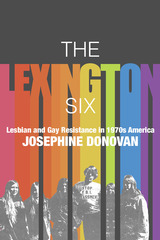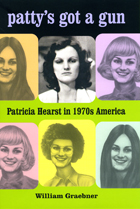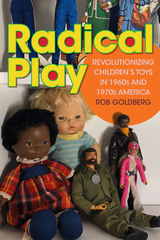3 books about 1970s America

The Lexington Six
Lesbian and Gay Resistance in 1970s America
Josephine Donovan
University of Massachusetts Press, 2020
On September 23, 1970, a group of antiwar activists staged a robbery at a bank in Massachusetts, during which a police officer was killed. While the three men who participated in the robbery were soon apprehended, two women escaped and became fugitives on the FBI's Ten Most Wanted list, eventually landing in a lesbian collective in Lexington, Kentucky, during the summer of 1974. In pursuit, the FBI launched a massive dragnet. Five lesbian women and one gay man ended up in jail for refusing to cooperate with federal officials, whom they saw as invading their lives and community. Dubbed the Lexington Six, the group's resistance attracted national attention, inspiring a nationwide movement in other minority communities. Like the iconic Stonewall demonstrations, this gripping story of spirited defiance has special resonance in today's America.
Drawing on transcripts of the judicial hearings, contemporaneous newspaper accounts, hundreds of pages of FBI files released to the author under the Freedom of Information Act, and interviews with many of the participants, Josephine Donovan reconstructs this fascinating, untold story. The Lexington Six is a vital addition to LGBTQ, feminist, and radical American history.
Drawing on transcripts of the judicial hearings, contemporaneous newspaper accounts, hundreds of pages of FBI files released to the author under the Freedom of Information Act, and interviews with many of the participants, Josephine Donovan reconstructs this fascinating, untold story. The Lexington Six is a vital addition to LGBTQ, feminist, and radical American history.
[more]

Patty's Got a Gun
Patricia Hearst in 1970s America
William Graebner
University of Chicago Press, 2008
It was a story so bizarre it defied belief: in April 1974, twenty-year-old newspaper heiress Patricia Hearst robbed a San Francisco bank in the company of members of the Symbionese Liberation Army—who had kidnapped her a mere nine weeks earlier. But the robbery—and the spectacular 1976 trial that ended with Hearst’s criminal conviction—seemed oddly appropriate to the troubled mood of the nation, an instant exemplar of a turbulent era.
With Patty’s Got a Gun, the first substantial reconsideration of Patty Hearst’s story in more than twenty-five years, William Graebner vividly re-creates the atmosphere of uncertainty and frustration of mid-1970s America. Drawing on copious media accounts of the robbery and trial—as well as cultural artifacts from glam rock to Invasion of the Body Snatchers—Graebner paints a compelling portrait of a nation confused and frightened by the upheavals of 1960s liberalism and beginning to tip over into what would become Reagan-era conservatism, with its invocations of individual responsibility and the heroic. Trapped in the middle of that shift, the affectless, zombielike, “brainwashed” Patty Hearst was a ready-made symbol of all that seemed to have gone wrong with the sixties—the inevitable result, some said, of rampant permissiveness, feckless elitism, the loss of moral clarity, and feminism run amok.
By offering a fresh look at Patty Hearst and her trial—for the first time free from the agendas of the day, yet set fully in their cultural context—Patty’s Got a Gun delivers a nuanced portrait of both an unforgettable moment and an entire era, one whose repercussions continue to be felt today.
[more]

Radical Play
Revolutionizing Children’s Toys in 1960s and 1970s America
Rob Goldberg
Duke University Press, 2023
In Radical Play Rob Goldberg recovers a little-known history of American children’s culture in the 1960s and 1970s by showing how dolls, guns, action figures, and other toys galvanized and symbolized new visions of social, racial, and gender justice. From a nationwide movement to oppose the sale of war toys during the Vietnam War to the founding of the company Shindana Toys by Black Power movement activists and the efforts of feminist groups to promote and produce nonsexist and racially diverse toys, Goldberg returns readers to a defining moment in the history of childhood when politics, parenting, and purchasing converged. Goldberg traces not only how movement activists brought their progressive politics to the playroom by enlisting toys in the era’s culture wars but also how the children’s culture industry navigated the explosive politics and turmoil of the time in creative and socially conscious ways. Outlining how toys shaped and were shaped by radical visions, Goldberg locates the moment Americans first came to understand the world of toys—from Barbie to G.I. Joe—as much more than child’s play.
[more]
READERS
Browse our collection.
PUBLISHERS
See BiblioVault's publisher services.
STUDENT SERVICES
Files for college accessibility offices.
UChicago Accessibility Resources
home | accessibility | search | about | contact us
BiblioVault ® 2001 - 2024
The University of Chicago Press









